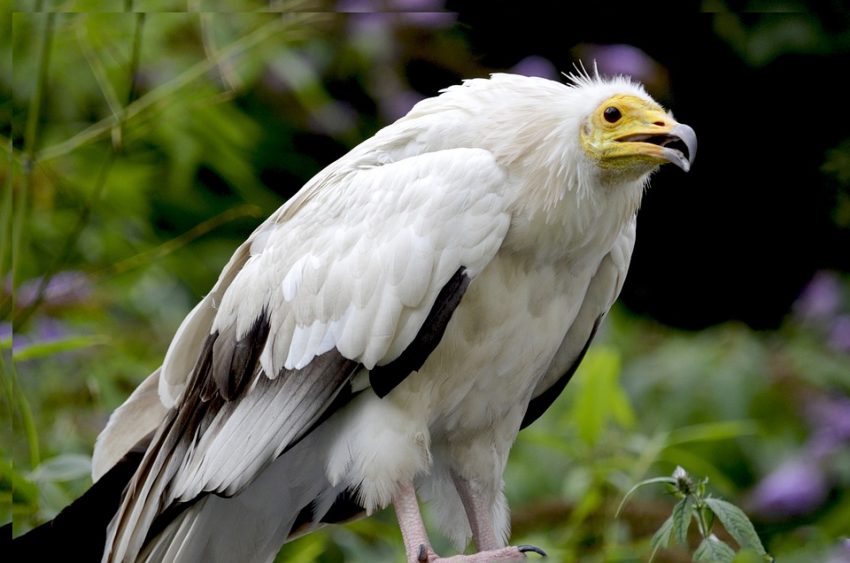Vultures are birds of prey. Adult birds have white feathers and black wings and tail. As they are inclined to stay near carcasses, their plumage is beige rather than pure white before they hatch and quickly turn dull. They also occasionally coat themselves with a layer of iron oxide, turning their feathers pinkish yellow, hence the German name Schmutzgeier. It is the smallest and most endangered of Europe’s four bird species.
Distribution
Vultures are common in southern Europe, Asia, and North Africa. Isolated populations exist in Cape Verde and the Canary Islands. Birds that breed in moderate areas migrate south in winter, while tropical populations are comparatively sedentary. Egyptian vultures usually live in dry, open areas such as grasslands, deserts, granaries and pastures, but need rocky regions for nesting. They are often found in and around urban areas, slaughterhouses, garbage dumps, fishing ports and other areas near people.
Habits and Lifestyle
Their social behavior differs depending on the resources available. Food-rich feeding grounds attract large numbers of birds, immature birds, and other predators. They may also feed alone or in pairs. Egyptian vultures are diurnal and hunt only by sight, not scent. They typically search for food in open areas near which they can see carcasses from the heights. Vultures do not search for their prey alone, but often find others hovering over their target. They may then perch at the top of the tree above which they intend to feed and wait to feed. The habitat of individuals, pairs, and family groups extends beyond the territory they are required to protect and often includes human droppings and areas where livestock are kept. Males will repeatedly fight for flight to protect their breeding territory.
Food
Vultures are carnivorous, feeding on droppings. However, they also feed on small mammals, birds, and reptiles. They also feast on the eggs of other birds and break large eggs by throwing large stones at them.

Mating Habits
Vultures are monogamous and travel in pairs during the breeding season. They build large nests that are continuously being replenished during the breeding season. It may be composed of scraps of old cloth, hair or fur. The males dive for mates during the breeding season and even fight over clutches during courtship. The breeding season fluctuates somewhat by region, but the eggs are generally laid between March and May. Usually two eggs are laid, and parents and offspring hold the eggs for 39-45 days. Both males and females feed the chicks until they fledge 70-85 days after hatching. When the chicks fledge, they can be seen flying around the habitat with their parents. They leave their parents when they begin migrating from the breeding grounds; they are adult when they are six years old.
Fun Facts About Egyptian Vultures
The Egyptian vulture is among the rare species using tools. To crack open their large, thick-skinned eggs, like ostrich eggs, Egyptian vultures usually walk hundreds of metres to find a stone, throw it at the egg, break it open and eat its contents.
These and other predators signal to each other the location of their food.
Egyptian vultures may fly up to 80 miles when looking for food.
In ancient Egypt, they were known as ‘Pharaoh’s sons’ because Pharaoh gave death to anyone who killed one, and they were revered as noble hunters.
Rarer than other species and just as beautiful, the Egyptian vulture is a living symbol of the lost and reborn Phoenix.
Share your thoughts with us in the comments below!

